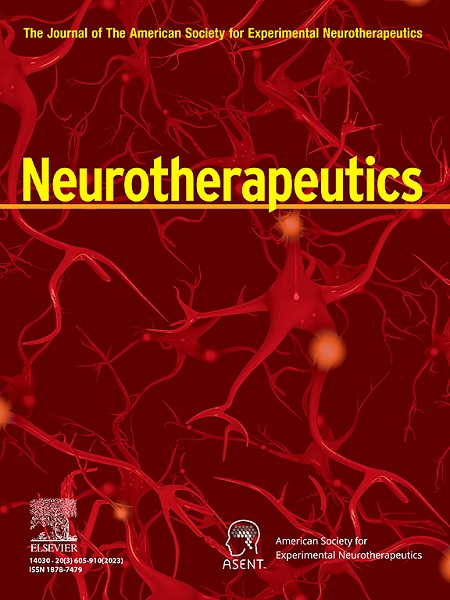Application of multimodal deep learning and multi-instance learning fusion techniques in predicting STN-DBS outcomes for Parkinson's disease patients
IF 5.6
2区 医学
Q1 CLINICAL NEUROLOGY
引用次数: 0
Abstract
Parkinson's Disease (PD) is a progressive neurodegenerative disorder with substantial impact on patients' quality of life. Subthalamic nucleus deep brain stimulation (STN-DBS) is an effective treatment for advanced PD, but patient responses vary, necessitating predictive models for personalized care. Recent advancements in medical imaging and machine learning offer opportunities to enhance predictive accuracy, particularly through deep learning and multi-instance learning (MIL) techniques. This retrospective study included 127 PD patients undergoing STN-DBS. Medical records and imaging data were collected, and patients were categorized based on treatment outcomes. Advanced segmentation models were trained for automated region of interest (ROI) delineation. A novel 2.5D deep learning approach incorporating multi-slice representation was developed to extract detailed ROI features. Multi-instance learning fusion techniques integrated predictions across multiple slices, combining radiomics and deep learning features to enhance model performance. Various machine learning algorithms were evaluated, and model robustness was assessed using cross-validation and hyperparameter optimization. The MIL model achieved an area under the curve (AUC) of 0.846 for predicting STN-DBS outcomes, surpassing the radiomics model's AUC of 0.825. Integration of MIL and radiomics features in the DLRad model further improved discriminative ability to an AUC of 0.871. Calibration tests showed good model reliability, and decision curve analysis demonstrated clinical utility, affirming the model's predictive advantage. This study demonstrates the efficacy of integrating MIL, radiomics, and deep learning techniques to predict STN-DBS outcomes in PD patients. The multimodal fusion approach enhances predictive accuracy, supporting personalized treatment planning and advancing patient care.
多模态深度学习和多实例学习融合技术在预测帕金森病患者 STN-DBS 治疗结果中的应用。
帕金森病(PD)是一种进行性神经退行性疾病,对患者的生活质量有很大影响。丘脑下核深部脑刺激(STN-DBS)是治疗晚期帕金森病的有效方法,但患者的反应各不相同,因此需要建立个性化护理的预测模型。医学成像和机器学习的最新进展为提高预测准确性提供了机会,特别是通过深度学习和多实例学习(MIL)技术。这项回顾性研究纳入了 127 名接受 STN-DBS 治疗的帕金森病患者。研究收集了病历和成像数据,并根据治疗结果对患者进行了分类。对高级分割模型进行了训练,以实现感兴趣区(ROI)的自动划分。开发了一种结合多切片表示的新型 2.5D 深度学习方法,以提取详细的 ROI 特征。多实例学习融合技术整合了多个切片的预测,结合了放射组学和深度学习特征,以提高模型性能。对各种机器学习算法进行了评估,并使用交叉验证和超参数优化对模型的稳健性进行了评估。MIL模型预测STN-DBS结果的曲线下面积(AUC)达到了0.846,超过了放射组学模型0.825的AUC。在 DLRad 模型中整合 MIL 和放射组学特征进一步提高了判别能力,AUC 达到 0.871。校准测试表明该模型具有良好的可靠性,决策曲线分析表明该模型具有临床实用性,从而肯定了该模型的预测优势。这项研究证明了整合 MIL、放射组学和深度学习技术来预测 STN-DBS 在帕金森病患者中的疗效。多模态融合方法提高了预测的准确性,支持个性化治疗规划,促进了患者护理。
本文章由计算机程序翻译,如有差异,请以英文原文为准。
求助全文
约1分钟内获得全文
求助全文
来源期刊

Neurotherapeutics
医学-神经科学
CiteScore
11.00
自引率
3.50%
发文量
154
审稿时长
6-12 weeks
期刊介绍:
Neurotherapeutics® is the journal of the American Society for Experimental Neurotherapeutics (ASENT). Each issue provides critical reviews of an important topic relating to the treatment of neurological disorders written by international authorities.
The Journal also publishes original research articles in translational neuroscience including descriptions of cutting edge therapies that cross disciplinary lines and represent important contributions to neurotherapeutics for medical practitioners and other researchers in the field.
Neurotherapeutics ® delivers a multidisciplinary perspective on the frontiers of translational neuroscience, provides perspectives on current research and practice, and covers social and ethical as well as scientific issues.
 求助内容:
求助内容: 应助结果提醒方式:
应助结果提醒方式:


